Expense or Investment? Part 3: Cooling Tower Fill Engineered Designs
January
28
2016
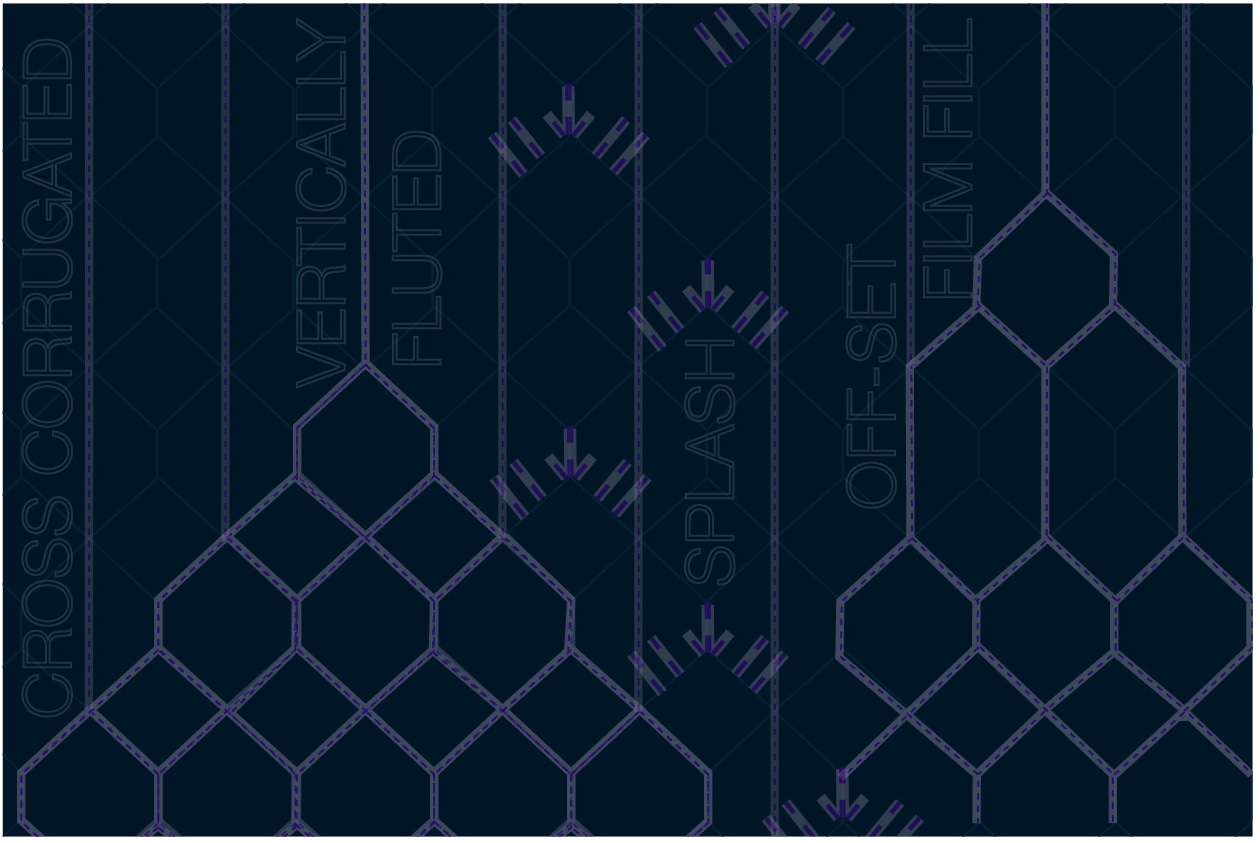
Even though Fill doesn't have accessory upgrades compared to that of your gearbox and fans, there are still many different types of fill and a variety of applications that affect your cooling tower performance and cost. So what's fill got to do with cooling tower expenses and investments? Quite a bit actually, let's review:
- Types of Fill:
- Counterflow:
- Cross Corrugated Film Fill
- Cross Corrugation Engineering: Cross corrugated fill was first developed in the 60's by Carl Munters. Cross corrugation was the first design to differentiate from the splash fill design and cater to a new market: package and HVAC cooling towers. A cross corrugation design means that the fill sheets are constructed and placed at alternating angles. This engineering construction amplifies water and air distribution that allows for a more effective and efficient thermal performance.
- Effects on performance: This type of fill is highly efficient because the cross engineered construction spreads the water flow over a greater area with each path the water takes. Additionally, the cross corrugation design has a small pack height, utilizing less space and less material compared to that of its predecessor, splash fill. These elements allow the cross corrugation fill to be more cost effective and maintain a higher thermal performance than other fill types. Additionally cross corrugated fill is easier to install and to repair, saving you even more time and energy.
- When to invest in this type of fill: This type of fill is recommended for use in package cooling towers or HVAC cooling towers that utilize very clean water. The one downfall of cross corrugation is that it clogs very easily when placed in cooling towers that operate utilizing water that contains a high amount of dirt and debris.
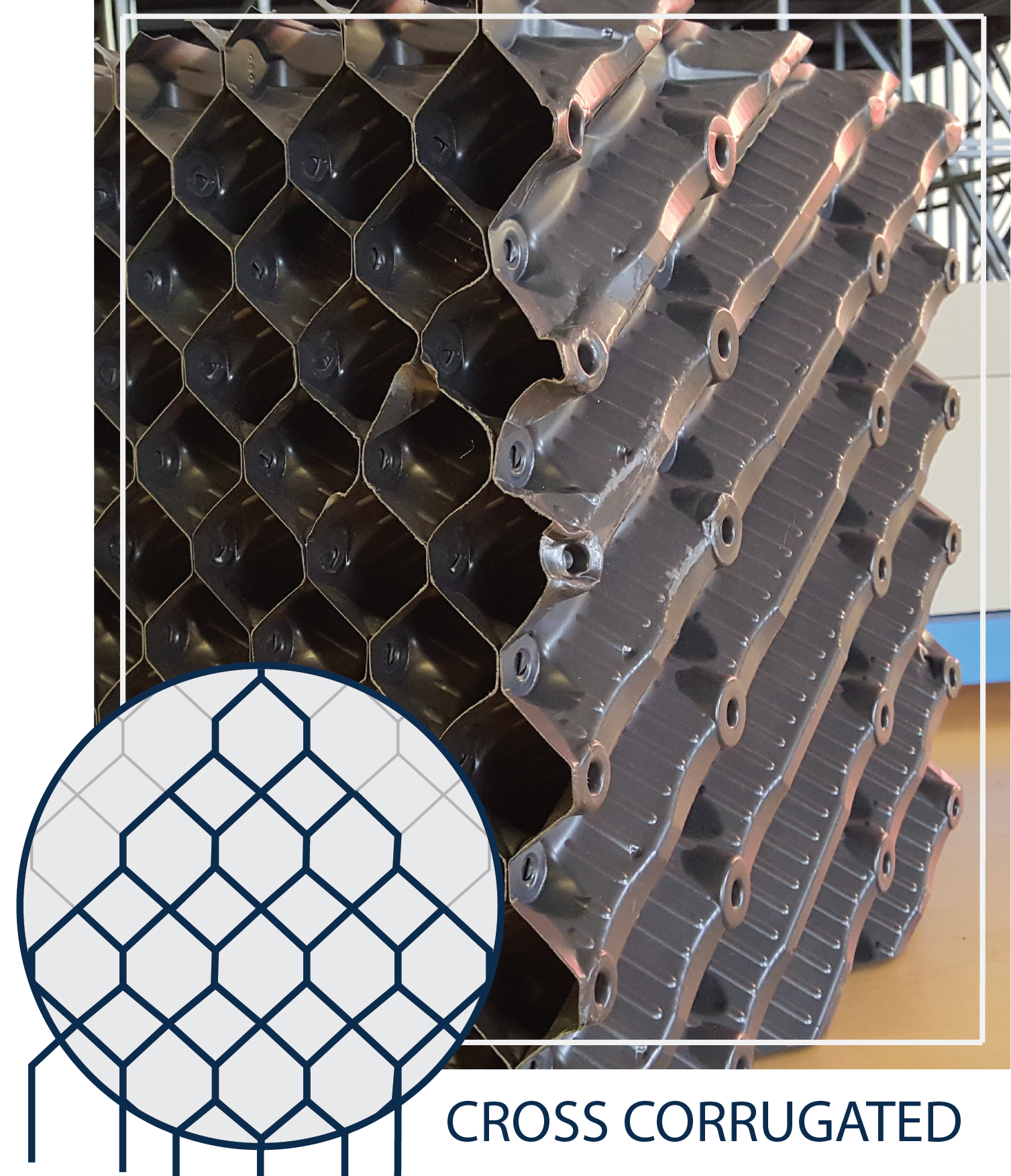
- Low Fouling: Vertical Film Fill
- Vertical Film Fill Engineering: Vertically fluted film fill means that each fill sheet runs vertically, allowing for water and air to pass through at a higher velocity. This will decrease fouling and clogging issues in cooling towers that operate using a very low quality of water.
- Effects on performance: Vertically fluted film fill design creates an anti-fouling environment that wards off clogging and water distribution issues that inhibit cooling performance. Although vertically fluted film fill won't clog as easily as cross corrugated fill, it does maintain a lower thermal performance because the water and air streams are not amplified throughout the fill area.
- When to invest in this type of fill: This type of fill is recommended for large industrial plants that operate with a very low quality of water. Even though thermal performance with the vertical film fill is lower, it will maintain a longer lifespan, minimize maintenance costs and maintain its expected cooling performance. This makes vertical film fill a very economical and effective choice for many industrial plants.
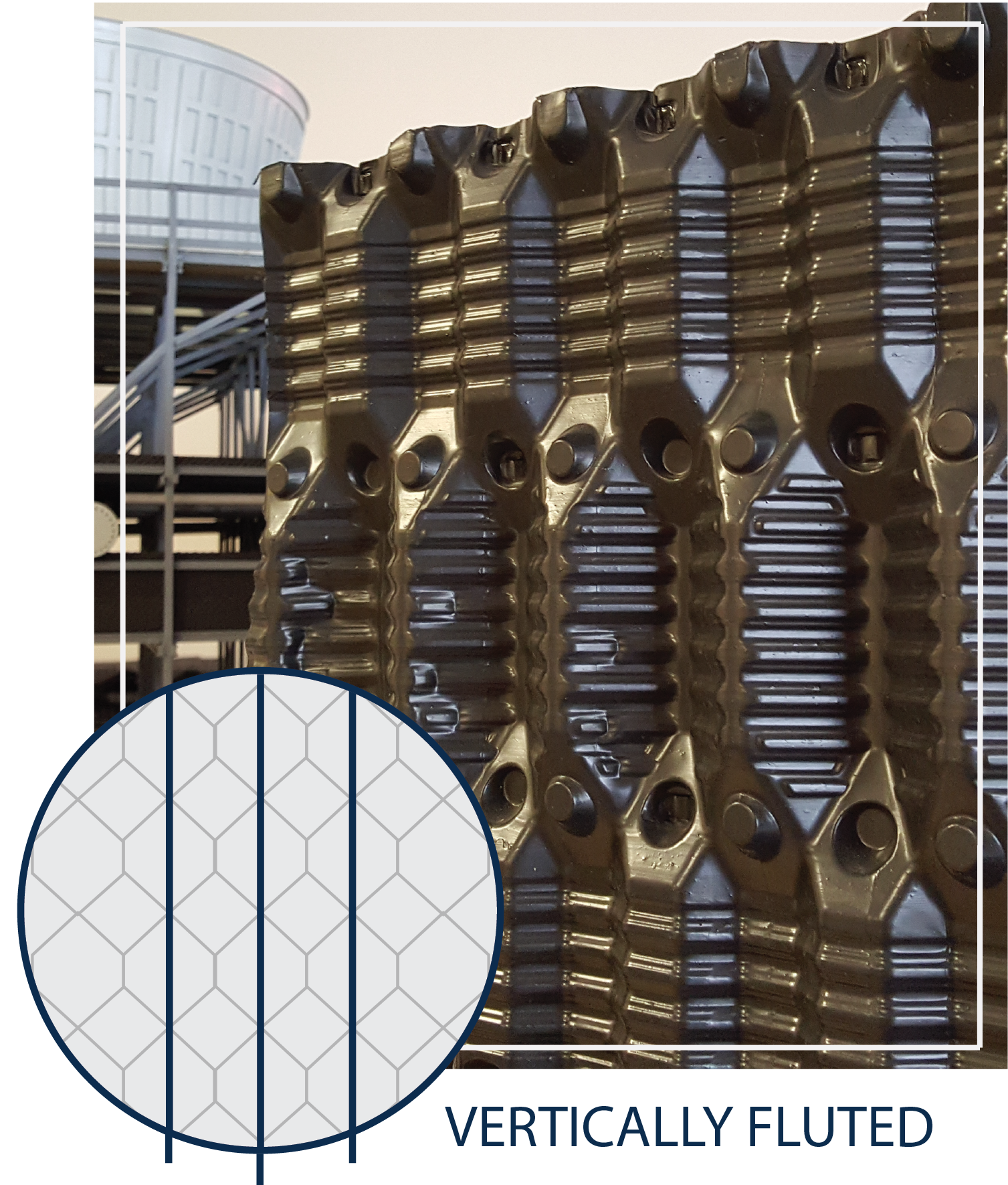
- Low Fouling: Offset Film Fill
- Offset Film Fill Engineering: Offset film fill is a combination of corrugated and vertical fill. It is constructed with 6 inches of vertical and 6 inches of cross corrugated fill.
- Effects on performance: Offset fill enhances the performance of your counterflow tower by combining the features of low fouling from the vertical fill with the optimized water and air distribution of the cross corrugated design.
- When to invest in this type of fill: Offset fill is generally used in cooling tower applications that maintain an average water quality within industrial spaces such as power, oil & gas, steel, chemical etc.

- Splash Fill
- CF Splash Fill Engineering: Counterflow splash fill is designed to promote the same concept of the droplet theory as the crossflow splash fill (referenced in the next section). Both are engineered to continuously break apart water droplets as the water falls over each fill layer. This provides greater exposure to the cool air within the tower. However, because of different configurations with regards to the air flow, crossflow and counterflow splash fill are designed differently to cater to each thermal engineering process.
- Effects on performance: Each time water droplets are broken apart into smaller droplets, the water can be quickly and efficiently cooled to increase performance.
- When to invest in this type of fill: Counterflow splash fill returns the greatest performance under industrial applications that utilize a very low quality of water. For example, splash fill is generally recommended for Industrial plants that utilize dirty water from the start, such as power plants running their tower off river water. Second, splash fill is common when a plants water system becomes filled with dirt or debris because of their own processes. Common industries that invest in CF splash fill include, but are not limited to: Paper mills, power plants, refineries, steel mills and sugar mills.
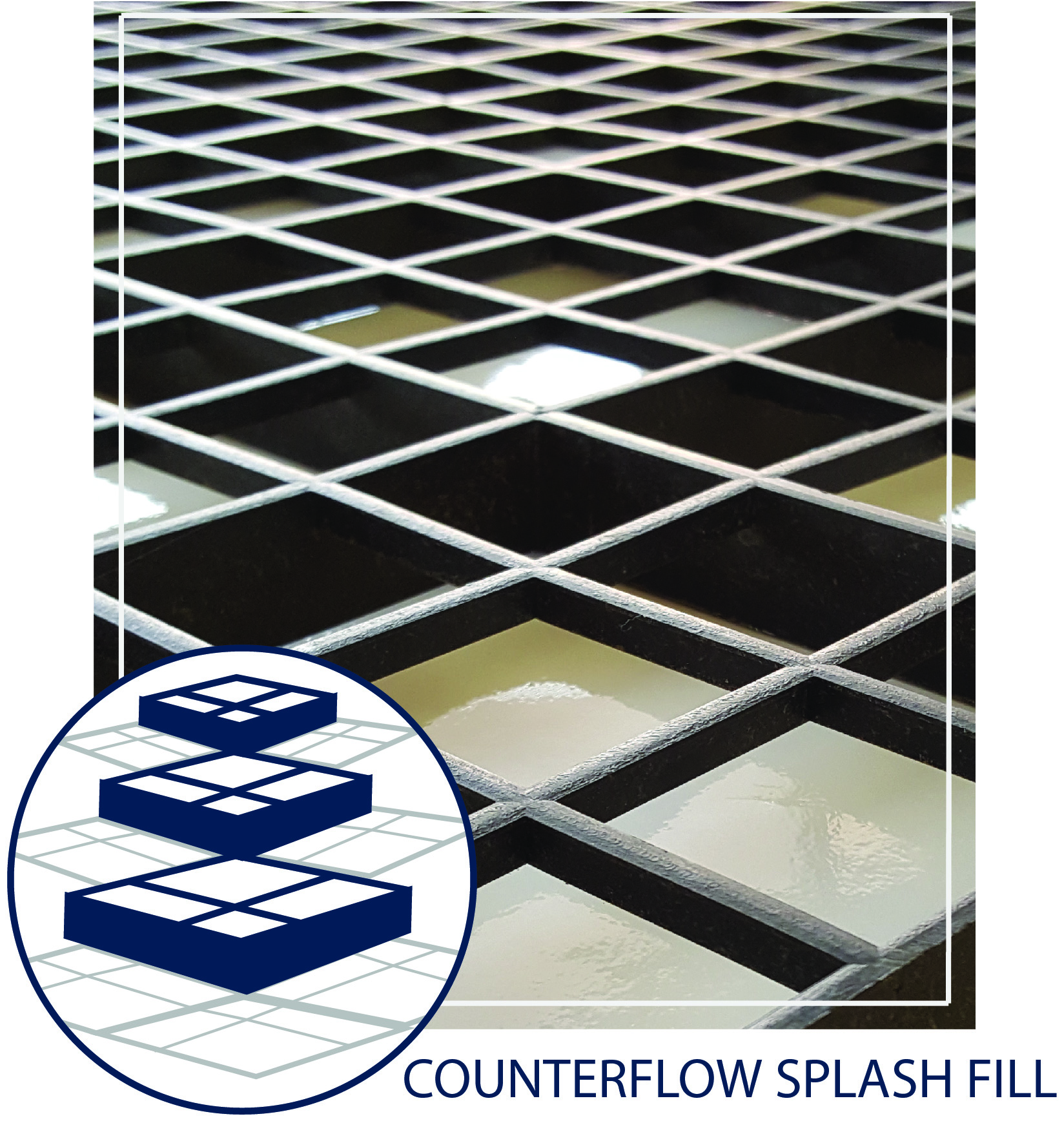
- Cross Corrugated Film Fill
- Crossflow:
- Crossflow splash fill
- XF Splash Fill Engineering: Splash fill is designed to implement the droplet theory. The droplet theory is the process in which water droplets continuously break apart to be re-exposed to the cool air. To do this, splash fill is placed every 4-8 inches in alternating rows to allow water to "splash" or continuously break apart into smaller droplets each time it hits the fill bar below it.
- Effects on performance: Water can be more effectively cooled when water droplets are continuously broken up and thus optimizing the heat transfer process. Splash fill is not only effective in the heat transfer process, but is also easily replaced and cost effective.
- When to invest in this type of fill: This type of fill is mostly utilized in large industrial plants with a need for larger constructed cooling towers. Splash fill is not space effective, requiring many layers of fill that in some cases can be 30 feet tall. However in large industrial cooling tower applications, splash fill is a good choice to optimize the performance of your cooling tower.
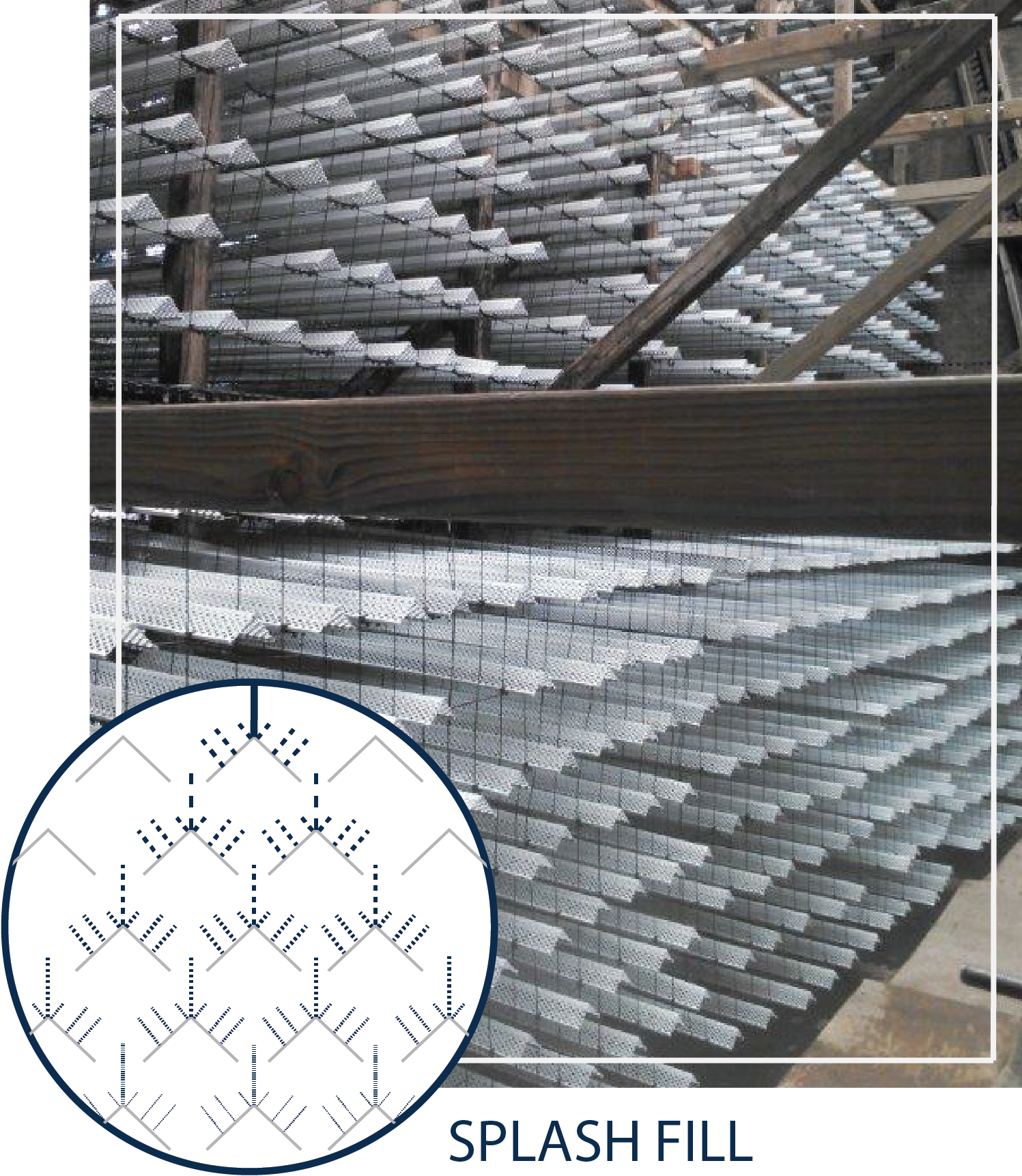
- Crossflow film fill (herringbone | cross corrugated)
- Herringbone Fill Engineering: Crossflow film fill is engineered to distribute water evenly across the fill area. As water enters the fill surface it cascades, zig zagging through the fill as a very thin sheet of water, increasing thermal performance.
- Effects on performance: The crossflow film fill design is effective in distributing water evenly over a larger area of the fill. This maximizes air and water flow for proper cooling performance. The herring bone design also allows for integrated inlet louvers and drift eliminators to further increase cooling tower performance.
- When to invest in this type of fill: This type of fill is generally utilized in smaller package crossflow towers or HVAC towers when the cooling tower is utilizing a good quality of water.
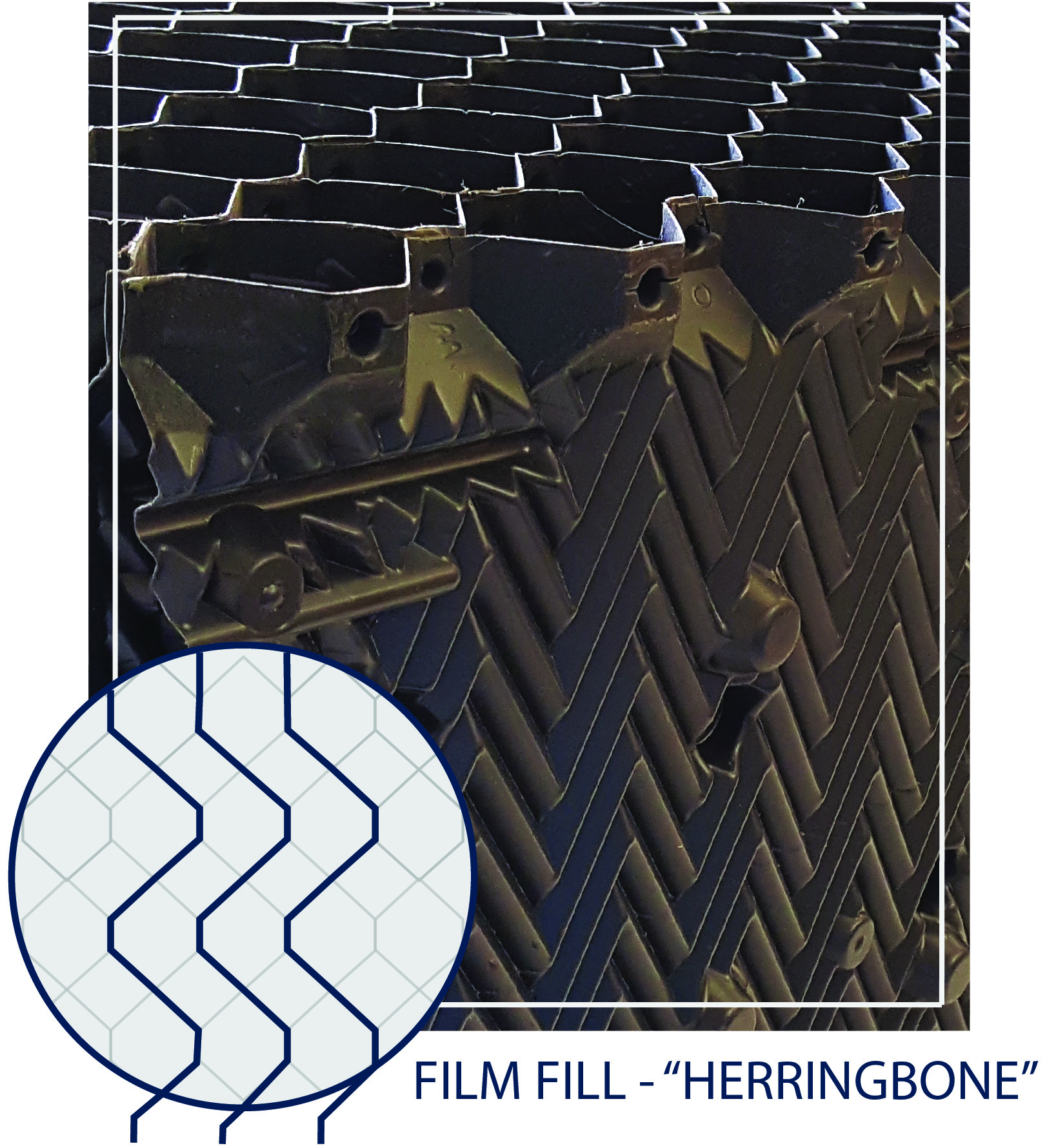
- Crossflow splash fill
- Counterflow:
Want to receive more industry tips? Become a CTD community member


